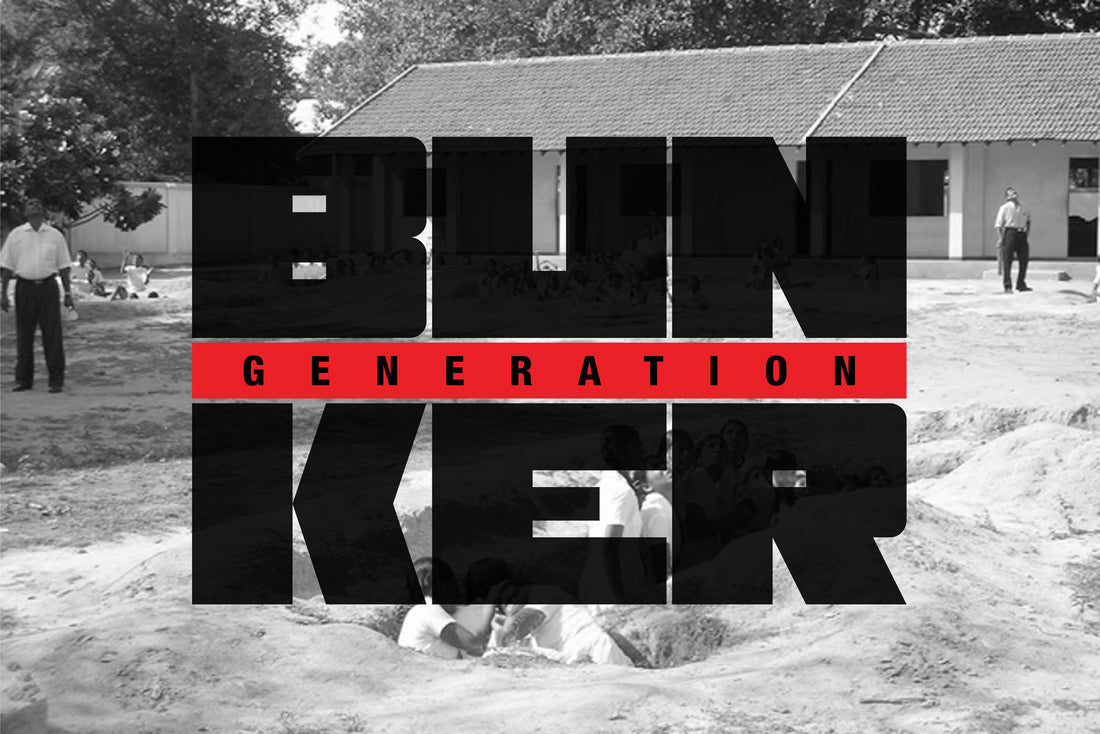
Bunker Generation: The Plight of an Entire Generation Born & Brought up in Bunkers.
Share
Would you consider living in a bunker? Not the cozy ones, but the straight out-of-the-dirt type. Count yourself lucky. Some people have been born and raised in bunkers. Yes, you heard it right, an entire bunker generation. This usually happens during wartime, especially ones that take several years to end.
One notable event was when a civil war broke out in Northern Sri Lanka and dragged on for twenty-six years. The conflict was between the revolutionist group The Liberation Tigers of Tamil Eelam and the Sinhalese-controlled government military.
As the violent conflict raged on, thousands of innocent civilians died. The lands become killing fields. The people are left shocked and depressed. Orphaned children cry amid chaos; mothers and fathers longed for the children they lost. People leave their homes to seek refuge in the bunkers they dug. The days endured inside the cold and shallow trenches torment them physically and mentally as every passing hour seems like an eternity. And each time they feel it is safe enough, they emerge from the bunkers to gather food, water, and other necessities. Some people are fortunate to return and spend another day in the bunkers. Others don't make it back at all.
For twenty-six years, life has been like this for the people in Sri Lanka. While the bunkers protected the people from the incessant battery of gunshots, shells, and bombs. However, there are times when the trenches themselves became grave pits for people who died the cruellest deaths. The army was reported to deliberately attack persons hiding in the bunkers, riddling them with bullets or tossing grenades at the helpless civilians. Still, whether it be a final resting place or a temporary haven, these bunkers saved thousands of people who bore the next generations of the people of Sri Lanka.
What exactly are bunkers, and what are they used for?
You can think of a bunker as an underground fortress built to protect against man-made or natural disasters. The use of these fortresses dates back thousands of years and has served its purpose well, especially in providing underground shelter during wartime.
How are bunkers made?
The most basic bunkers are constructed by creating a hole in the ground large enough to accommodate a person. The pit is usually fortified with rocks and wood, metals, and reinforced concrete for the more sophisticated ones. Depending on the purpose and structure, it can hold anywhere from one to thousands of people. Bunkers are usually built at a shallow depth, but some go as deep as the Cheyenne Mountain Complex, 2000 ft. underground. There are several types of bunkers, but they are mainly classified into five categories.
• Trench
A trench is an example of a simple bunker, a long and narrow ditch dug on the ground. Trenches can be a standalone feature or a network of trenches that provide safe passage from one area to another. Trenches were the preferred fortress used by the people during the Sri Lanka Civil War.
• Artillery
It is a hardened target facility built to defend people from areal and other artillery attacks. Artillery bunkers contain crew, weapons, and other valued materials. These military installations are usually located in coastal regions.
• Munitions Storage
A munition bunker is a fortified military installation that securely stores explosives and ammunition. These bunkers are designed with an arch shape roof with walls made of reinforced concrete blast walls to contain accidental explosions or radiation from within.
• Industrial
Military and non-military activities are carried out in industrial bunkers. It is primarily used as a storage facility for food and other supplies to shield these enterprises from the destruction due to aerial bombardment. These bunkers cover large areas like mining sites and additional large-scale storage and data facilities.
• Personal
A personal bunker, sometimes known as a Doomsday bunker, is a bunker purposely built with the house. The designs of the house incorporate the construction of these subterranean shelters as protection against harsh weather or from what they deem as an increasingly turbulent world, doomsday, or the next global crisis. These bunkers are often built on private property.
Over the years, the construction of bunkers gained traction among people from all over the world. Bunker architecture evolved and has become more sophisticated than ever. But no matter how elaborate the design may be, it is worth knowing that the simplest of bunkers once saved thousands of people.
True to the concept of bunkers, Freedom83 showcases bunker generation-inspired crewneck to represent the plight of an entire generation born and brought up in bunkers with its blocky "Bunker Generation" front design. The material is made from 5% Cotton, 65% Polyester 285GSM Ribbed Crewneck Logo patch hemmed on the bottom left.

If you dig the whole bunker concept, you will definitely love the Bunker Generation lineup by Freedom83.
Check it out on this link below to know more about the "Bunker Generation" clothing line.
